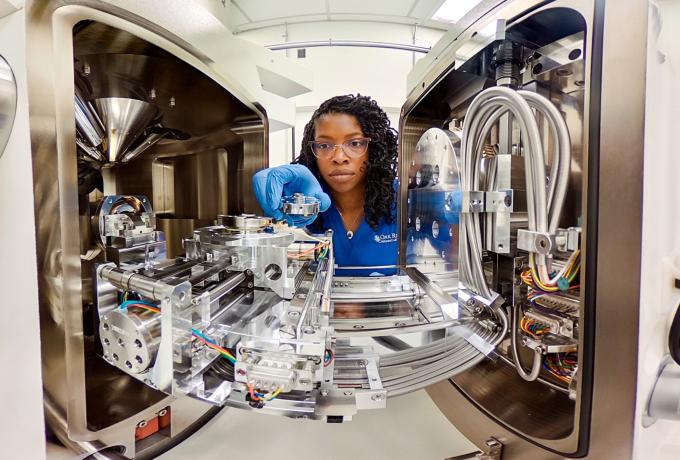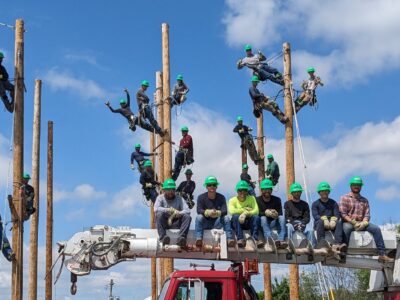Securing domestic supply chains is an ongoing effort in the energy sector that aims to boost positive economic and sustainability impacts nationwide. The federal government has prioritized this shift toward a domestic critical materials supply chain and produced a comprehensive plan to build an energy sector industrial base: America’s Strategy to Secure the Supply Chain for a Robust Clean Energy Transition.
Most recently, the United States Department of Energy (DOE) announced an investment of $17 million across 14 projects, funded by the Office of Energy Efficiency and Renewable Energy’s Advanced Materials and Manufacturing Technologies Office, to accelerate critical materials innovation and to promote efficient solutions to meet current and future supply chain needs.
Video Courtesy Ames National Laboratory
Spanning 11 states, these projects aim to strengthen manufacturing for high-impact components and technologies, such as hydrogen fuel cells, high-performance lithium-ion batteries, and high-yield, low-defect power electronics.
“DOE is helping reduce the nation’s dependence on foreign supply chains through innovative solutions that will tap domestic sources of the critical materials needed for next-generation technologies,” said Jennifer M. Granholm, former U.S. Secretary of Energy.

Photo Courtesy U.S. Department of Energy
The projects are coordinated through the Energy Department’s Critical Materials Collaborative, an initiative designed to support real-world innovation through the creation process of research, development, and demonstration. The DOE says investing in these ventures is part of an effort to support resilient supply chains, addressing issues outlined in each of the agency’s Critical Minerals and Materials strategic pillars. They include:
- Diversifying supplies of critical minerals and materials.
- Developing alternatives to critical minerals and materials.
- Improving materials and manufacturing efficiency.
- Investing in circular-economy approaches.
According to the DOE, the projects receiving this funding were chosen due to their ability to help “reduce the environmental impacts of mining and augment the country’s manufacturing workforce.” The selected projects fall under four categories and will:
- Use magnets with reduced critical materials content.
- Improve unit operations of processing and manufacturing of critical materials.
- Recover critical material from scrap and post-consumer products.
- Reduce critical material demand for clean energy technologies.
To highlight a few, Niron Magnetics, Inc., based in Minneapolis, was selected to receive the largest award at $2.7 million. The firm will use the money to design, analyze, and create a permanent magnet motor prototype that doesn’t use “critical rare earth materials.”
Photo Courtesy Ornl
Other projects include one from ABB, Inc. in Cary, North Carolina, which was selected for a $1.52 million award to develop and prototype motors using manganese-bismuth-based polymer-bonded permanent magnet tech.
Ames National Laboratory in Ames, Iowa, was selected for two $1 million awards. One will be used to prototype and scale up the NdFeB magnet technology developed at the Critical Materials Innovation Hub. The other will fund work to demonstrate a “cost-competitive, one-step castable, grain-oriented, and fully dense cerium-based gap magnet.”
Oak Ridge National Laboratory in Oak Ridge, Tennessee, was selected to develop an energy-efficient scalable process to recover “rare earth elements (REEs) from domestic waste stream sources and mining tailings.” The award amount was listed at $1 million.“These investments — part of our industrial strategy — will keep America’s growing manufacturing industry competitive while delivering economic benefits to communities nationwide,” Granholm said.






